SFX
by Martin Willey
When Space: 1999 was made, "opticals" meant sending the film to an external company who would use an optical printer, The original film was refilmed with a second film prepared by the company. The first optical printer dates to 1927. It was developed by Linwood Dunn during World War 2 for the US military, and after the war became widely used in Hollywood.
Compositing two different images could superimpose parts of one image over another, like a multiple exposure. Therefore, a third piece of film, a matte, may be required. For a simple static shot- like the screen shots below- a part of the set could just have a black screen over it. For more complex special effects, particularly involving miniature spaceships in motion, there could be multiple pieces of film, each with its own matte film.
Even in the 1970s, opticals were expensive, and because the original footage was re-filmed, there was always a reduction in the image quality. Therefore the Space: 1999 crew tried to avoid optical effects, by using in-camera lighting, lens or mirrors, or by using multiple exposures. 2001: A Space Odyssey used mechanical camera motion control, but this was too time consuming for a TV show. Star Wars (1977) used a combination of VistaVision 35mm film, which uses a larger negative area to keep good quality, and motion control electronics to control the cameras, so film passes (and mattes) were reliably repeated. By the mid 1990s, digital film editing made compositing much easier.
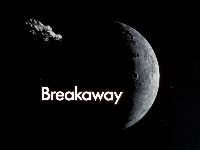
All the on-screen text were optical shots. So were the fade outs and fade ins at the start and end of shots, and dissolves from one shot to another. In 2005, when the series was remastered, all these elements were recreated using modern digital techniques, using the original background film (which had been preserved for foreign language editions).
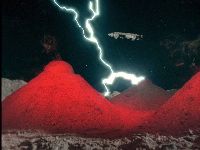
All on-screen lightning, as well as laser beams, were opticals. These were drawn by hand (by Ray Caple) then combined in the optical printer.
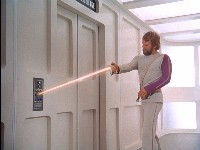
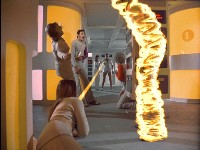
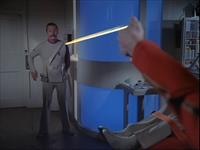
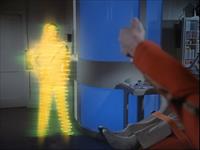
Laser beams were all optical effects, added in post-production. There are sometimes small errors in the start or end position of laser beams, but the effects are only seen for a few frames and would not be noticed until home video releases.
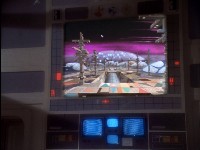
Most screen shots were "burn-ins". The screen was a static shot, with the various lights flashing around; the screen image was filmed separately and put over the screen in the optical printer. In Year 2 the SFX crew built a smaller model of the screen, to make it easier to composite the screen image.
Copyright Martin Willey